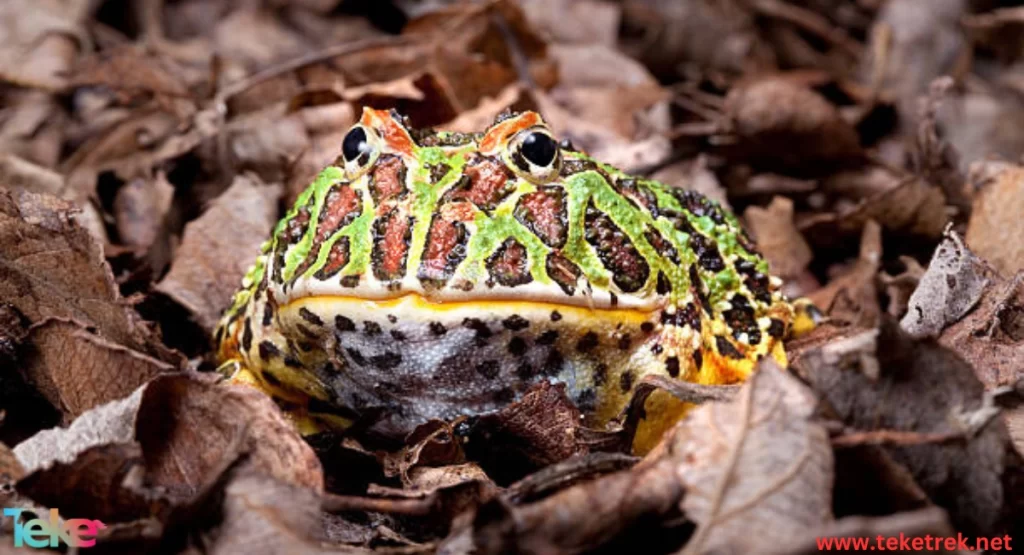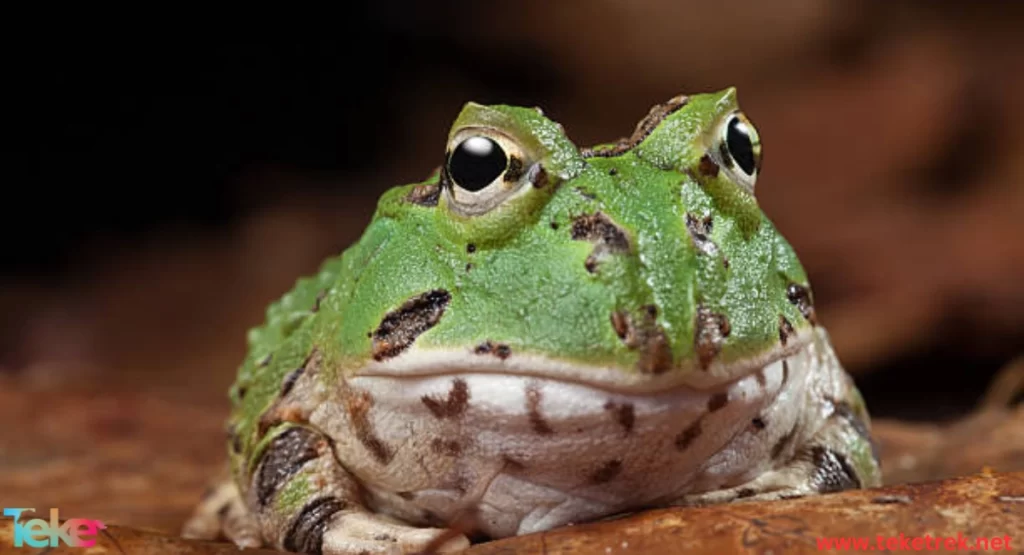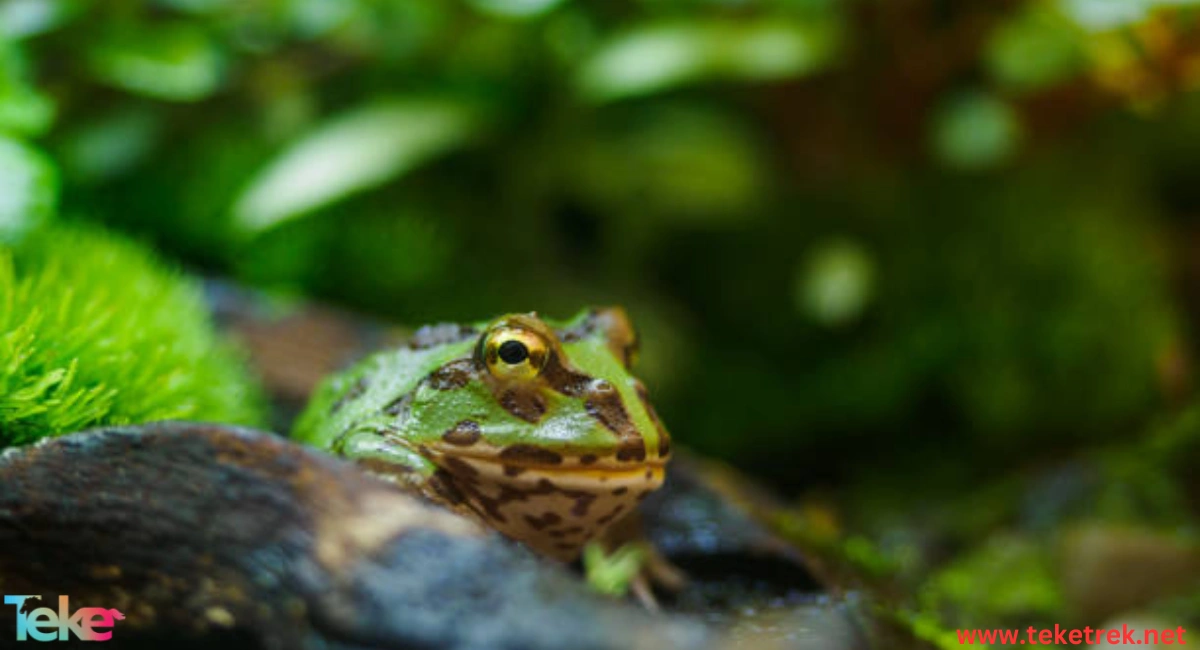The Horned Frogs is also known as the Pacman frog due to its resemblance to the video game character, has evolved with different colors and originates from South America.
Let’s learn more about it from teketrek.
Facts about the Horned Frogs
The Horned Frogs is type of frog is scientifically known as Ceratophrys Ornata and is also referred to by various names such as the Argentine horned frog and the wide-mouthed frog, belonging to the Ceratophryidae family.
There are many myths surrounding the Horned Frog.
For example, in Argentina, it was classified as the “horse killer,” but in reality, it may have accidentally caught horses’ lips while they were grazing, as the frog is not venomous and unlikely to harm a horse.
When its environment becomes dry or if it loses its food source, the frog will encase itself in a flexible outer layer of skin for protection, giving the impression that it is dead.
Once dried, the frog sheds the outer flexible skin layer and consumes it.
The Horned Frog is aggressive, using its wide mouth to capture and consume prey almost its size.
It is patient and relies on its coloring for camouflage, so all the frog needs to do is hide and wait in green areas until its prey passes by.
The frog then strikes, grabbing the prey with its strong jaws and teeth, killing and swallowing it.
The Horned Frogs emit an alarm call while jumping in water to escape predators, alerting other frogs.
These frogs are sometimes called “mouths with legs” because their mouths appear to make up half of their entire front body, truly wide-mouthed

The Horned Frog specification
The Body: The Horned Frog is an aquatic animal with a round body.
The Jaw: wide jaw similar in size to its head.
The legs: It has short legs that differ from other frog species, making it less proficient at jumping.
The eyelids: It has raised, pointed eyelids giving it a horned appearance, which can help the frog camouflage by resembling leaf edges found on the forest floor.
The length: Male horned frogs are about 4.5 inches long, while females are about 6.5 inches long.
The color: These frogs usually have yellow or white markings, and their limbs and hind range in color variations from green, yellow, brown, and even red.
Habitats and Distribution for the Horned Frog
The Horned Frog builds its home in damp forest floors filled with debris and moisture.
It resides in rainforests and tropical swamps and was originally found in South America.
What does The Horned Frog feed on
It feeds on insects, lizards, mice, amphibians, and even other frogs.
It may only jump to a different spot after defecating in the previous location, which means it could gain weight if fed a diet rich in fattened mice.
You can feed young Horned Frogs daily, and once they reach maturity, feed them every two or three days.
As a carnivorous animal, the Horned Frog will attack almost anything that crosses its path when hungry, including animals larger than itself.
The Garter Snake: Fascinating Facts About This Common and Beneficial Reptile
Reproduction in the Horned Frog
The life cycle of the Horned Frog consists of three stages: egg, tadpole, and adult frog, transitioning through a process known as metamorphosis.
It is not the only amphibian that undergoes this transformation; all other amphibians do as well.
The process of metamorphosis is controlled by the hormones prolactin and thyroxine.

FAQs about Horned Frog
- Is the Horned Frog dangerous?
It is not dangerous to humans; it poses a threat only to other small animals and sometimes to each other. - What are some predators of the Horned Frog?
Predators include birds, snakes, and bears. - How fast can the Horned Frog travel?
It can travel at speeds of up to 5 miles per hour.
How long does the Horned Frog live?
The Horned Frog can live for 5 to 8 years.
- What are Pacman frogs known for?
Pacman frogs, as strictly terrestrial amphibians, are known for their poor swimming ability. They predominantly inhabit humid environments with damp leaf litter. Their common name derives from the Pacman arcade game due to their rounded bodies and large mouths, resembling the game’s character.
- Are Pacman frogs friendly?
Pacman frogs can bite if they feel threatened, and their bites can be quite painful, especially in adults. However, such bites are uncommon, and most Pacman frogs do not exhibit aggressive behavior towards humans.
- What do Pacman frogs enjoy?
Pacman frogs are insectivores and have a varied diet that includes crickets, silkworms, and occasionally mealworms or waxworms. They should be fed every 2 to 3 days, preferably in the evening. They also require Vitamin D and calcium to maintain their health.
- How many species of Pacman frogs are there?
There are 8 types of Pacman frogs, all within the genus *Ceratophrys*. They share a rounded body shape, large mouths, and blotchy patterns. These species display a range of colors including brown, tan, green, yellow, and red.
- What are some facts about Pacman frogs?
Native to South America, Pacman frogs are found in dry regions of Argentina, Bolivia, Paraguay, and Brazil. They are terrestrial and live on the ground rather than in trees or water.
In conclusion, it is important to highlight the significance of this animal in maintaining ecological balance





